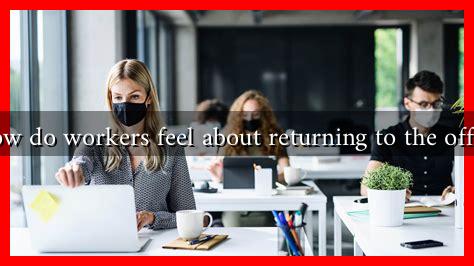-
Table of Contents
How Do Workers Feel About Returning to the Office?
The COVID-19 pandemic has dramatically reshaped the workplace landscape, leading to a significant shift in how employees view their work environments. As companies begin to transition back to in-person work, understanding workers’ sentiments about returning to the office is crucial for employers aiming to foster a productive and satisfied workforce. This article explores the various feelings and opinions workers have regarding their return to the office, supported by statistics, case studies, and expert insights.
The Shift to Remote Work
Before delving into the feelings surrounding the return to the office, it is essential to recognize the impact of remote work. According to a survey conducted by Stanford University, remote work has led to a 13% increase in productivity among employees. This shift has allowed many workers to enjoy a better work-life balance, reduced commuting time, and increased flexibility in their schedules.
Mixed Feelings About Returning
As organizations begin to call employees back to the office, reactions have been mixed. A survey by Gallup found that:
- 48% of employees prefer a hybrid work model, combining both remote and in-office work.
- 39% of workers expressed a desire to continue working remotely full-time.
- Only 13% of employees were eager to return to the office full-time.
These statistics highlight a significant preference for flexibility among workers. Many employees have grown accustomed to the benefits of remote work and are hesitant to give them up.
Concerns About Health and Safety
Health and safety remain paramount concerns for many employees. The lingering effects of the pandemic have left workers wary of crowded office spaces. A survey by McKinsey & Company revealed that:
- 70% of employees are concerned about their health and safety when returning to the office.
- 65% of workers want their employers to implement strict health protocols, such as social distancing and regular sanitization.
Employers must address these concerns to ensure a smooth transition back to the office. Implementing safety measures can help alleviate anxiety and foster a sense of security among employees.
The Importance of Flexibility
Flexibility has emerged as a critical factor in employees’ willingness to return to the office. Many workers appreciate the autonomy that remote work provides, allowing them to manage their time and responsibilities more effectively. Companies that offer flexible work arrangements are likely to see higher employee satisfaction and retention rates.
For instance, tech giant Salesforce has adopted a flexible work model, allowing employees to choose where they work. This approach has resulted in increased employee engagement and productivity, demonstrating the benefits of flexibility in the workplace.
Case Studies: Companies Leading the Way
Several companies have successfully navigated the transition back to the office by prioritizing employee feedback and well-being. Here are a few notable examples:
- Google: Google has implemented a hybrid work model, allowing employees to work from home two days a week. This approach has been well-received, with many employees expressing satisfaction with the balance it provides.
- Microsoft: Microsoft has introduced a “flexible work policy,” enabling employees to choose their work location. This policy has resulted in a more engaged workforce and has been praised for its adaptability.
- Twitter: Twitter has taken a bold step by allowing employees to work from anywhere indefinitely. This decision has garnered positive feedback and has positioned the company as a leader in workplace flexibility.
Conclusion: The Future of Work
As companies navigate the complexities of returning to the office, understanding workers’ feelings and preferences is essential. The desire for flexibility, concerns about health and safety, and the benefits of remote work are all factors that employers must consider. By prioritizing employee well-being and implementing flexible work arrangements, organizations can create a positive work environment that fosters productivity and satisfaction.
In summary, the future of work is likely to be hybrid, with a blend of remote and in-office arrangements. Companies that adapt to these changing preferences will not only retain talent but also cultivate a more engaged and motivated workforce. For further insights on workplace trends, you can explore resources from the Gallup and McKinsey & Company.


